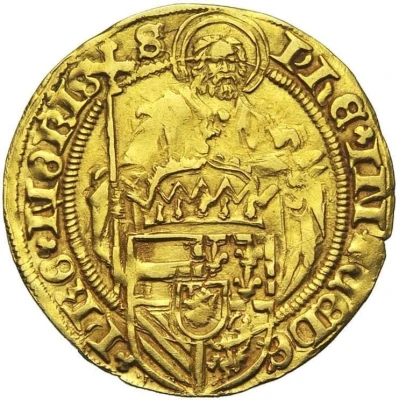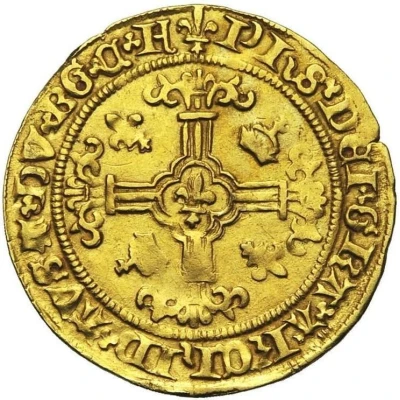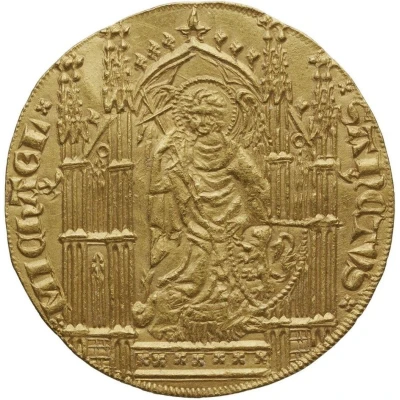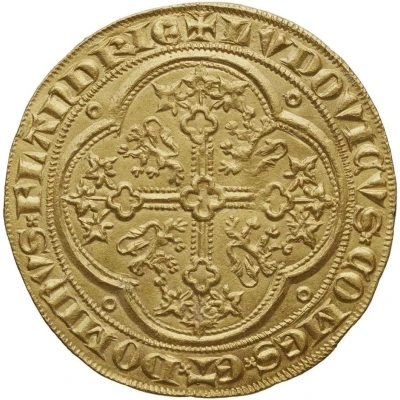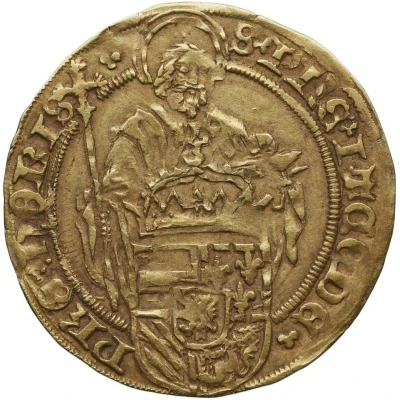
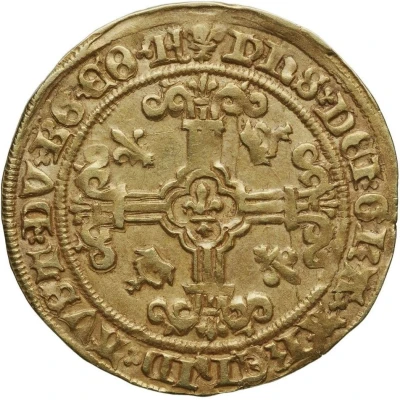

Florin Piedfort? - Philip the Handsome ND
| Gold | 4.47 g | - |
| Issuer | Burgundian Netherlands (County of Flanders, Belgian States) |
|---|---|
| Duke | Philip the Handsome (1482-1506) |
| Type | Standard circulation coin |
| Years | 1499-1503 |
| Value | 1 Florin (Guilder) |
| Currency | Groot (864-1506) |
| Composition | Gold |
| Weight | 4.47 g |
| Shape | Round (irregular) |
| Technique | Hammered |
| Demonetized | Yes |
| Updated | 2024-10-04 |
| Numista | N#400434 |
|---|---|
| Rarity index | 97% |
Reverse
Floriate cross with lily in center, and alternating crowns and lilies in the angles.
Script: Latin (uncial)
Lettering: PhS ⋆ DEI ⋆ GRA ⋆ ARChID ⋆ AVST ⋆ DV ⋆ BG ⋆ CO ⋆ F
Lettering (regular font): PHS ⋆ DEI ⋆ GRA ⋆ ARCHID ⋆ AVST ⋆ DV ⋆ BG ⋆ CO ⋆ F
Unabridged legend: Philippus dei gratia archidux Austriae dux Burgundiae comes Flandriae
Translation: Philip, by God's grace Archduke of Austria, Duke of Burgundy, Count of Flanders
Comment
Assuming the weight of this coin is correct, it appears to be both unique and unattributed. BNF calls it a toison d'or which matches the weight of that type (see first link), but this is unlikely correct because the golden fleece is not represented anywhere on this coin.
Instead, the design matches that of the Florin with Saint Phillip of the 8th emission (1499-1503 second link), though the obverse legend is constructed slightly differently, with the S of S PhS contiguous, rather than to the left of the saint's head.
IF the alloy used for this coin were the higher purity of the toison d'or (0.992 compared to the 0.663 of the florin), the gold content of this coin would be double that of the normal florin, making it a sort of piedfort of double gold content. The coins were being struck in the same years at the Bruges mint, though they are of different size (diameter).
Interesting fact
One interesting fact about this coin is that it was minted during a time of great economic and political change in the Burgundian Netherlands. The reign of Philip the Handsome (1499-1503) saw the introduction of new coinage systems and the rise of trade and commerce in the region, which led to the development of a more standardized system of currency. This coin, with its unique design and gold content, reflects the growing influence of the Burgundian Netherlands in European trade and commerce during this period.
